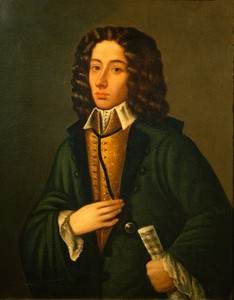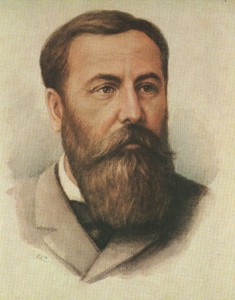
Giovanni Battista Pergolesi |
Giovanni Battista Pergolesi
Pergoles. “Maid-Maid”. A Serpina penserete (M. Bonifaccio)

The Italian opera composer J. Pergolesi entered the history of music as one of the creators of the buffa opera genre. In its origins, connected with the traditions of the folk comedy of masks (dell’arte), opera buffa contributed to the establishment of secular, democratic principles in the musical theater of the XNUMXth century; she enriched the arsenal of opera dramaturgy with new intonations, forms, stage techniques. The patterns of the new genre that had developed in Pergolesi’s work revealed flexibility, the ability to be updated and to undergo various modifications. The historical development of onepa-buffa leads from the early examples of Pergolesi (“The Servant-Mistress”) – to W. A. Mozart (“The Marriage of Figaro”) and G. Rossini (“The Barber of Seville”) and further into the XNUMXth century (“Falstaff” by J. Verdi, “Mavra” by I. Stravinsky, the composer used the themes of Pergolesi in the ballet “Pulcinella”, “The Love for Three Oranges” by S. Prokofiev).
Pergolesi’s whole life was spent in Naples, famous for its famous opera school. There he graduated from the conservatory (among his teachers were famous opera composers – F. Durante, G. Greco, F. Feo). In the Neapolitan theater of San Bartolomeo, Pergolesi’s first opera, Salustia (1731), was staged, and a year later, the historic premiere of the opera The Proud Prisoner took place in the same theater. However, it was not the main performance that attracted the attention of the public, but two comedy interludes, which Pergolesi, following the tradition that had developed in Italian theaters, placed between the acts of the opera seria. Soon, encouraged by the success, the composer compiled from these interludes an independent opera – “The Servant-Mistress”. Everything was new in this performance – a simple everyday plot (the clever and cunning servant Serpina marries her master Uberto and becomes a mistress herself), witty musical characteristics of the characters, lively, effective ensembles, a song and dance warehouse of intonations. The rapid pace of the stage action demanded great acting skills from the performers.
One of the first buffa operas, which gained immense popularity in Italy, The Maid-Madame contributed to the flourishing of comic opera in other countries. Triumphant success accompanied her productions in Paris in the summer of 1752. The tour of the troupe of the Italian “Buffons” became the occasion for the sharpest operatic discussion (the so-called “War of the Buffons”), in which adherents of the new genre clashed (among them were encyclopedists – Diderot, Rousseau, Grimm and others) and fans of the French court opera (lyrical tragedy). Although, by order of the king, the “buffons” were soon expelled from Paris, passions did not subside for a long time. In the atmosphere of disputes about ways to update the musical theater, the genre of French comic opera arose. One of the first – “The Village Sorcerer” by the famous French writer and philosopher Rousseau – made a worthy competition to “The Maid-Mistress”.
Pergolesi, who lived only 26 years, left a rich, remarkable in its value creative heritage. The famous author of buffa operas (except for The Servant-Mistress – The Monk in Love, Flaminio, etc.), he also successfully worked in other genres: he wrote seria operas, sacred choral music (masses, cantatas, oratorios) , instrumental works (trio sonatas, overtures, concertos). Shortly before his death, the cantata “Stabat Mater” was created – one of the most inspired works of the composer, written for a small chamber ensemble (soprano, alto, string quartet and organ), filled with a sublime, sincere and penetrating lyrical feeling.
The works of Pergolesi, created almost 3 centuries ago, carry that wonderful feeling of youth, lyrical openness, captivating temperament, which are inseparable from the idea of the national character, the very spirit of Italian art. “In his music,” B. Asafiev wrote about Pergolesi, “along with the captivating love tenderness and lyrical intoxication, there are pages imbued with a healthy, strong sense of life and the juices of the earth, and next to them there are episodes in which enthusiasm, slyness, humor and irresistible carefree gaiety reign easily and freely, as in the days of carnivals.
I. Okhalova
Compositions:
operas – over 10 opera series, including The Proud Captive (Il prigionier superbo, with interludes The Maid-Mistress, La serva padrona, 1733, San Bartolomeo Theater, Naples), Olympiad (L’Olimpiade, 1735, ” Theater Tordinona, Rome), buffa operas, including The Monk in Love (Lo frate ‘nnamorato, 1732, Fiorentini Theater, Naples), Flaminio (Il Flaminio, 1735, ibid.); oratorios, cantatas, masses and other sacred works, including Stabat Mater, concertos, trio sonatas, arias, duets.





